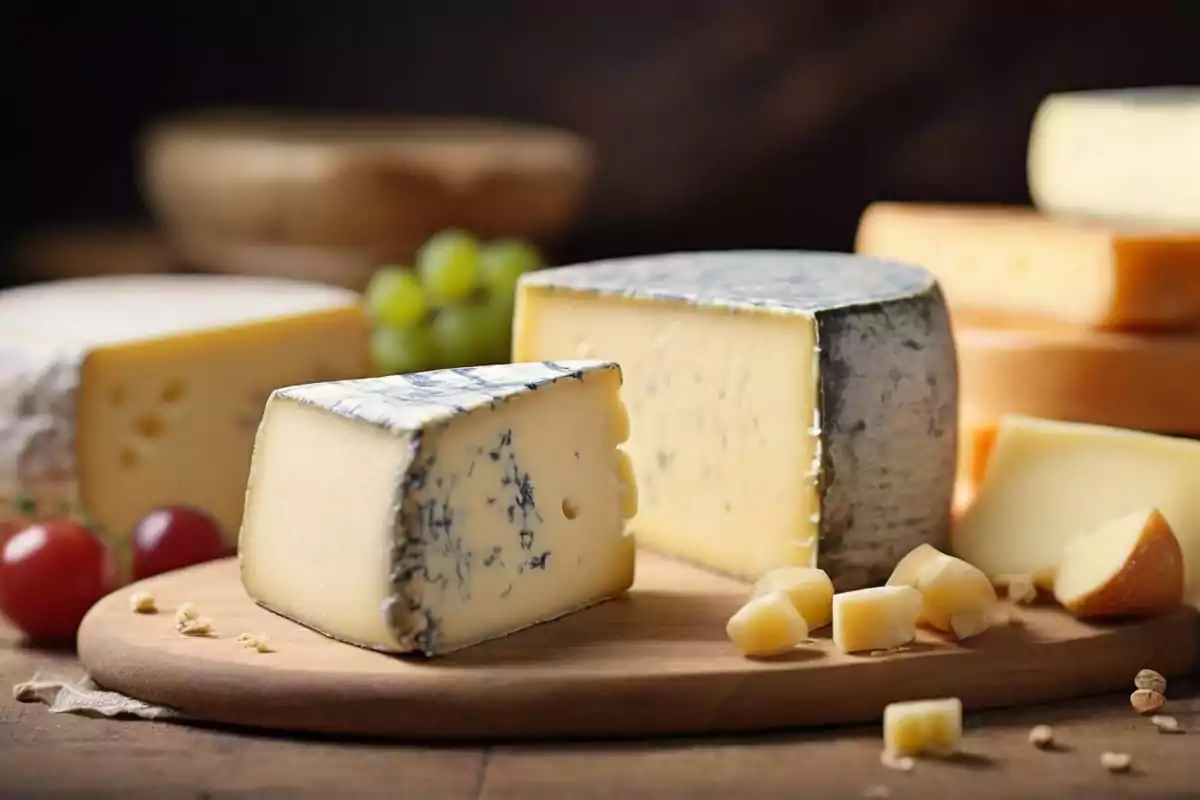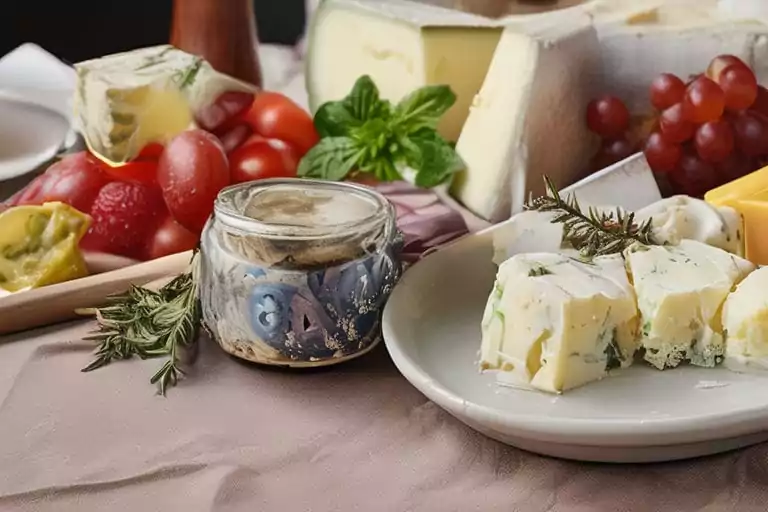Introduction to Fat-Free Cheese
The Popularity of Cheese in Diets
The Shift Towards Healthier Eating Habits
Enter fat-free cheese. A product of our times, where the demand for healthier options has led to innovations in food processing. But what exactly is fat-free cheese? It’s cheese that has had most of the fat removed during processing. This sounds like a dream come true for cheese lovers looking to lead a healthier lifestyle. However, it’s not just about removing the fat; it’s about understanding the impact on nutritional value, taste, and how it fits into our diets.
The shift towards healthier eating habits has made us more vigilant about what we consume. With fat-free cheese, it’s possible to enjoy the essence of cheese, but it’s crucial to peel back the layers and see if it truly aligns with our health goals. As we explore the nuances of fat-free cheese, we’ll uncover whether it’s a worthy substitute or if it’s too good to be true. Stay tuned as we dive into the world of fat-free cheese, a product that straddles the line between indulgence and health.
Understanding Fat-Free Cheese
Definition and Production Process
Fat-free cheese is not just a product; it’s a marvel of modern food science. At its core, it’s cheese that has undergone a special process to remove or reduce its fat content significantly. But, how do they do it? Well, it all starts with the milk. By using skim or low-fat milk instead of whole milk, cheese manufacturers can create a cheese that’s lower in fat from the get-go. Then, through various processing techniques, additional fat is removed, ensuring the final product has minimal fat content.
However, it’s not all about taking things away. The challenge lies in maintaining that creamy texture and rich flavor we all love about cheese. This is where food technologists work their magic, sometimes adding binders or other ingredients to compensate for the loss of fat. The result? A cheese that’s lighter on calories and fat but still tries to bring joy to our taste buds.
Types of Low-Fat and Fat-Free Cheeses
When you wander through the cheese aisle, you’ll notice a plethora of low-fat and fat-free options, each boasting its unique qualities. From mozzarella that’s perfect for a lighter pizza topping to cottage cheese that’s a staple in diet-friendly breakfasts, the variety is impressive. Ricotta, Swiss, and even cheddar—there’s a low-fat or fat-free version of almost every cheese out there.
But here’s the kicker: not all fat-free cheeses are created equal. Some are naturally lower in fat, like certain types of cottage cheese and ricotta, which don’t require much alteration to fit into the low-fat category. Others, like cheddar and mozzarella, undergo more significant processing to shed their fatty content.
As we peel back the layers of fat-free cheese, it’s clear that this culinary innovation offers a spectrum of choices for the health-conscious consumer. Whether you’re sprinkling parmesan over a salad or spreading cream cheese on your morning bagel, there’s a fat-free or low-fat option waiting for you. But, as we’ll explore in the upcoming sections, the decision to switch to fat-free cheese isn’t just about fat content—it’s about understanding the trade-offs in flavor, nutrition, and how it fits into your overall dietary goals.
Health Implications of Fat-Free Cheese
Nutritional Comparison: Fat-Free vs. Full-Fat Cheese
When it comes to fat-free cheese, the most glaring difference from its full-fat counterpart is, unsurprisingly, the fat content. But, as we peel back the wrapper, it’s essential to look beyond just the fat. Full-fat cheese is often vilified for its saturated fats, which have been linked to higher cholesterol levels. On the flip side, fat-free cheese offers a way to enjoy cheese without these worries, right? Well, it’s not all black and white.
Reducing fat can lead to an increase in sodium and additives, as manufacturers try to mimic the taste and texture of full-fat cheese. So, while you’re cutting down on fat, you might be unknowingly upping your intake of other things you’re trying to avoid. It’s a bit of a nutritional balancing act.
The Role of Saturated Fats in Health
The debate around saturated fats is as old as time. Once deemed the villain of heart health, recent studies suggest that the story is more complex. Yes, excessive intake of saturated fats can lead to heart issues, but they also play a role in hormone production and cell membrane integrity. The key? Moderation.
Fat-free cheese allows you to sidestep the saturated fat content, but it’s crucial to remember that not all fats are bad. Our bodies need fats, just the right kinds, like those from avocados, nuts, and seeds. It’s about finding the balance that works for your body and health goals.
Can Fat-Free Cheese Aid Weight Loss?
Here’s the million-dollar question: Can swapping to fat-free cheese help you lose weight? Theoretically, yes. Lower fat means lower calories, and if you’re watching your calorie intake, this can contribute to weight loss. However, cheese alone isn’t a magic bullet for weight loss. It’s part of a larger puzzle that includes overall diet, exercise, and lifestyle.
Moreover, cheese, whether full-fat or fat-free, is a source of protein, which is digested slowly and can help you feel fuller for longer. This can reduce snacking and potentially lead to weight loss. But remember, the type of cheese, how much you eat, and what you pair it with all play a role in its impact on your weight.
In conclusion, fat-free cheese might seem like a healthier option at first glance, but it’s important to consider the whole nutritional picture. It can be a part of a balanced diet, especially for those looking to reduce saturated fat intake. However, it’s essential to read labels, understand the trade-offs, and, as always, enjoy cheese in moderation. After all, a life without cheese is no life at all, but a life with too much cheese might not be as healthy as we’d like.
Taste and Culinary Use of Fat-Free Cheese
Flavor Profile of Fat-Free Cheese
Let’s cut right to the chase: when it comes to fat-free cheese, many folks are skeptical about its taste. And, honestly, they have a point. Fat is a major carrier of flavor, and when you remove it, you’re inevitably left with something that can taste a bit… lacking. But, it’s not all doom and gloom. While fat-free cheese might not have the rich, creamy taste of full-fat varieties, advancements in food technology have bridged the gap significantly.
The flavor of fat-free cheese can vary widely, depending on the type of cheese and the brand. Some do a commendable job of mimicking the original’s taste, while others might leave you wondering if you’re just eating glorified cardboard. The key is to manage expectations and be open to experimenting with different brands and types to find one that tickles your taste buds just right.
Cooking with Fat-Free Cheese: Does It Melt?
Ah, the meltability factor—a crucial consideration for cheese lovers. Traditional cheese melts into a gooey, stretchy delight, thanks to its fat content. So, what happens when you take the fat out of the equation? Well, fat-free cheese can be a bit more stubborn. It might melt, but not with the same gusto or texture as its full-fat counterpart.
However, don’t let this deter you from using it in your cooking. Fat-free cheese can still be a versatile ingredient, especially in dishes where cheese isn’t the star of the show but rather a supporting character. Think sprinkled over salads, added to omelets, or used in sandwiches. It’s all about finding the right application where its melting qualities (or lack thereof) won’t make or break the dish.
Creative Ways to Incorporate Fat-Free Cheese in Meals
Incorporating fat-free cheese into your meals requires a bit of creativity, but it’s far from impossible. Here are a few ideas to get you started:
- Enhance the Flavor: Pair fat-free cheese with strong-flavored ingredients like fresh herbs, spices, or roasted vegetables to compensate for any lack in taste.
- Use as a Topping: Sprinkle it over soups, salads, or baked dishes where it can add a cheesy touch without needing to melt perfectly.
- Mix with Full-Fat Cheese: If you’re not ready to go full fat-free, consider mixing it with a small amount of full-fat cheese. You’ll reduce the overall fat content while still keeping some of the flavors and textures you love.

For those looking to explore further, the Academy of Nutrition and Dietetics offers fantastic resources on healthy eating and can provide additional inspiration for using fat-free cheese in your cooking.
In summary, while fat-free cheese might not win any awards for its flavor or melting qualities on its own, with a little ingenuity, it can still play a valuable role in a health-conscious kitchen. It’s all about experimenting and finding the right balance that works for you and your palate.
The Pros and Cons of Fat-Free Cheese
Health Benefits of Choosing Fat-Free
Opting for fat-free cheese comes with its share of health perks, especially for those closely monitoring their dietary fat and calorie intake. By slashing the fat, you’re also cutting down on calories, which can be a boon for weight management. Moreover, reducing saturated fat intake is a heart-healthy move, aligning with recommendations from heart health authorities like the American Heart Association.
Another upside? Fat-free cheese still packs a nutritional punch, offering a good source of protein, calcium, phosphorus, and sometimes vitamin D and A, nutrients essential for bone health, muscle function, and more. It’s a way to enjoy the benefits of dairy without the full fat content, making it a smart choice for those with specific health goals.
Potential Drawbacks and Considerations
However, it’s not all smooth sailing in the land of fat-free cheese. One of the main gripes is taste and texture, as removing fat often means compromising on the creamy, rich flavor that cheese lovers crave. Manufacturers might add artificial ingredients or extra sodium to enhance taste and texture, which could be a concern for those watching their sodium intake or preferring less processed foods.
Furthermore, fat plays a key role in satiety, helping you feel fuller for longer. With fat-free cheese, you might find yourself reaching for more to feel satisfied, potentially negating the calorie-saving benefits. It’s a delicate balance between enjoying the health benefits and not missing out on the joy of eating cheese.

Making an Informed Choice
So, should you switch to fat-free cheese? It boils down to your personal health goals, dietary preferences, and how you plan to use it. If reducing saturated fat and calorie intake is a priority, fat-free cheese can be a valuable addition to your diet. Yet, it’s important to read labels carefully, choosing options with the least amount of added sodium and artificial ingredients.
For those on the fence, consider incorporating fat-free cheese alongside reduced-fat or full-fat cheeses in moderation. This way, you can enjoy the best of both worlds—savoring the flavors you love while keeping an eye on your health.
In the end, cheese, in any form, is a delightful indulgence. Whether you choose full-fat, reduced-fat, or fat-free, the key is to enjoy it as part of a balanced, varied diet. For more insights on making healthier cheese choices, the National Dairy Council offers a wealth of information on the nutritional benefits of dairy products, helping you make informed decisions that align with your lifestyle and health objectives.
Choosing fat-free cheese isn’t just about cutting calories; it’s about making mindful choices that contribute to a healthier lifestyle without sacrificing the joy of eating cheese. After all, life’s too short not to enjoy the foods we love, especially when there are so many options to suit our health needs and taste preferences.
